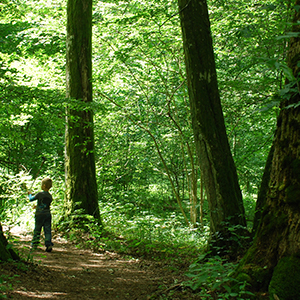Biodiversity important for all Sustainable Development Goals

A new study exemplifies the breadth of ways in which biodiversity can contribute to achievement of all 17 Sustainable Development Goals and thereby help to underpin sustainable development. Researchers from both Uppsala University and the Swedish University of Agricultural Sciences have contributed to the newly published article in Nature Sustainability.
The international research team has searched the scientific literature for evidence of how biodiversity components (that is, ecosystems, species and genes) may contribute directly to each Sustainable Development Goal. The study also considers how biodiversity’s direct contributions to fulfilling some Sustainable Development Goals may indirectly contribute to the achievement of other goals to which biodiversity does not contribute directly. The result is that all goals directly or indirectly can be supported by biodiversity.
“People benefit from biodiversity in so many ways that are under-appreciated or ignored. For example, a diversity of pollinators ensures crop pollination and a third of global food production is dependent on them, microorganisms contribute to waste management, and many species have inspired people to develop new products and ways of doing things” says Malgorzata Blicharska, lead-author of the article from Uppsala University.
“One of the goals concern human health and well-being. Biodiversity is important in many ways for that goal. For example, for air and water quality but also other things that may not be that obvious like green areas can reduce stress and promote a healthier lifestyle”, says Grzegorz Mikusiński, researcher at the Swedish University of Agricultural Sciences and co-author of the article.
The study also highlights that complex links between biodiversity and sustainable development may not only lead to them being overlooked but also to well-intended but misguided actions. For instance, in comparison with developing countries, many developed countries thrive economically despite having less biodiversity.
Yet this paradox can be explained when one realises that such countries often sustain their development by benefiting from degradation of less-developed countries’ biodiversity
“Such coupling of socioeconomic and environmental interactions”, says Malgorzata Blicharska, “means that national, transboundary and international actions are needed to sustain biodiversity and development globally.”
More information
Malgorzata Blicharska, Senior lecturer
Department of Earth Sciences, Natural Resources and Sustainable Development
Uppsala University
malgorzata.blicharska@geo.uu.se, 076-822 66 16
Grzegorz Mikusiński, researcher
Department of Ecology, SLU
grzegorz.mikusinski@slu.se, 070-775 71 61
Vetenskaplig artikel
Blicharska, M.; Smithers, R.J., Mikusiński, G., Rönnbäck, P., Harrison, P.A., Nilsson, M., Sutherland, W.J. 2019. Biodiversity's contributions to sustainable development. Nature Sustainability DOI: 10.1038/s41893-019-0417-9.
https://rdcu.be/bXARU